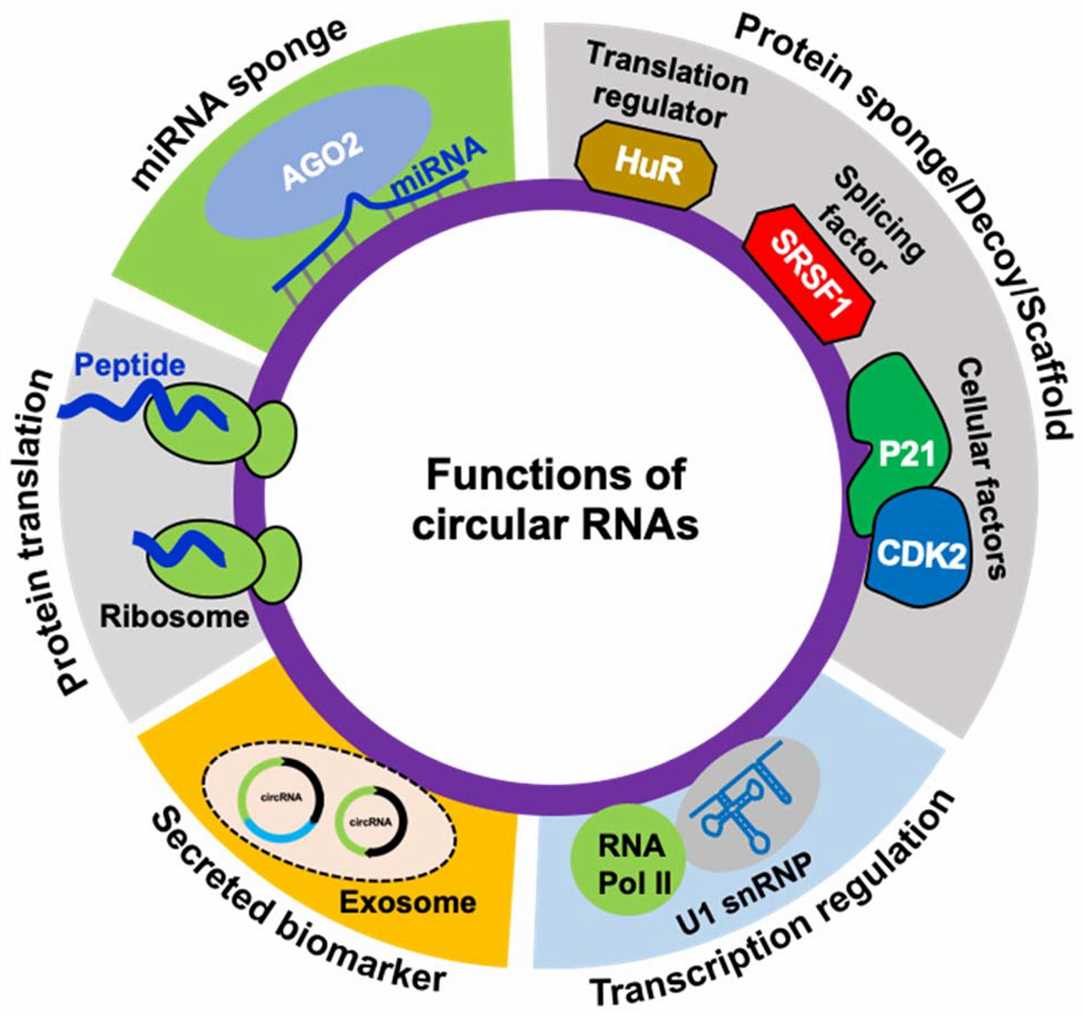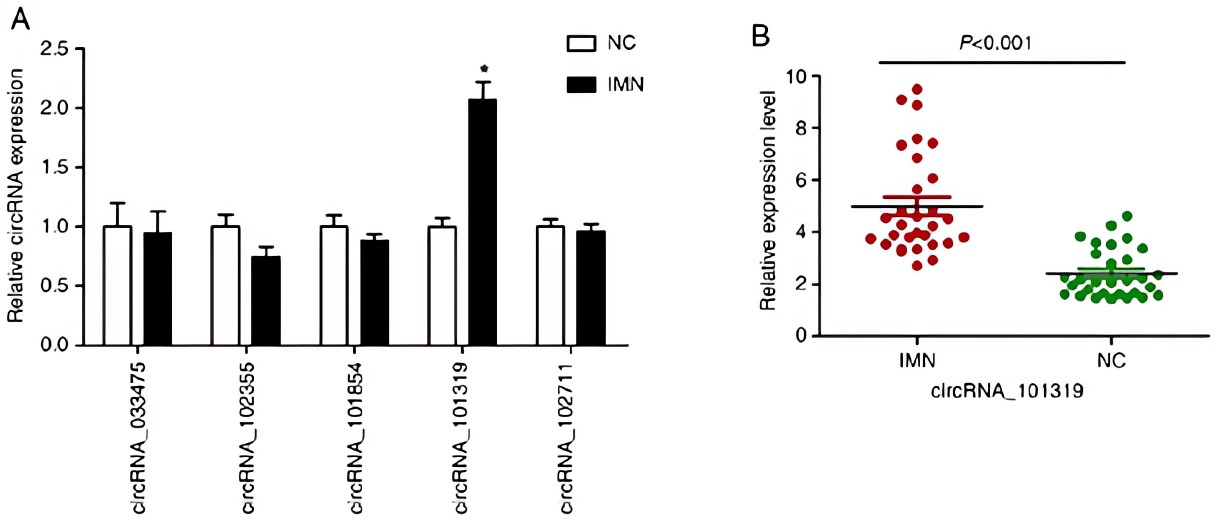In Vitro Expression Validation Service for Synthetic Circular RNAs
In recent years, the research on circular RNAs (circRNAs) has attracted growing attention. Mounting evidence reveals that these RNA molecules are closely linked to many cellular activities, and importantly, their dysregulation may be involved in the pathogenesis of various diseases. The rise of synthetic circular RNAs provides new ideas for the study of circRNAs. At Creative Biolabs, we provide comprehensive expression validation services for synthetic circular RNAs.
Overview of CircRNAs
As a special class of RNA molecules, the first elucidated function of circRNAs is to serve as sponges for microRNAs. Following that, results have revealed that they play a vital role in diverse life activities, including transcription and translation, protein transport and protein-protein interactions. In addition, dysregulation of circRNAs is closely related to cancer, cardiovascular disease as well as nervous system disease. Due to the characteristics of high stability and tissue or cell-specific expression, circRNAs may become potential therapeutic targets. circRNA overexpression vectors are often used as a convenient tool to explore circRNA functions. Furthermore, direct synthesis of circRNA to overexpress circRNA is also an effective alternative.
 Fig.1 Schematic representation of known functions of circRNAs.1
Fig.1 Schematic representation of known functions of circRNAs.1
In Vitro Expression Validation Services
The in vitro generation of circRNAs consists of two crucial steps: the synthesis of linear RNA precursors and the ligation of linear RNAs. The synthesis process involves various chemical and enzymatic methods. This technique produces highly purified circRNA molecules that can be delivered into target cells for further research. Since the original discovery of circRNAs, various biochemical tools have been developed to verify the expression of specific circRNAs. A wide variety of assays are available at Creative Biolabs.
- Reverse transcription-PCR (RT-PCR) assay
One of the most fundamental tools for validating circRNAs is RT-PCR. In this method, RNA isolation, cDNA synthesis as well as PCR analysis are critical procedures. circRNA is converted into cDNA by RT. Since the cDNA is derived from a circRNA, this sequence contains the exon-exon junction sequence, so it is necessary to design primers to specifically amplify and detect this junction.
 Fig.2 RT-qPCR validation of five differentially expressed circRNAs.²
Fig.2 RT-qPCR validation of five differentially expressed circRNAs.²
- Digital gene expression assay
This is a novel technique that can precisely quantify linear mRNA without any enzymatic reaction. Recent studies have indicated that under certain conditions, this technique can be used to detect circRNAs in high-quality and low-quality RNA samples from patients with B-cell malignancies.
- Luciferase reporter assay
The system combines the coding sequence of the reporter gene with circRNAs. The expression of circRNAs was determined by detecting the products of reporter genes.
Why Choose Us?
- Rapid and accurate circular RNA detection results;
- Multiple validated assay methods;
- One-stop service from RNA synthesis to expression detection;
- The experienced team provides rationalization advice based on analysis results.
As a senior supplier in the field of circRNA, our dedicated scientists have successfully completed a number of challenging projects in this field. If you are interested in our in vitro expression validation service for synthetic circular RNAs service, please contact us for more information.
References
- Das, Arundhati, et al. "Emerging role of circular RNA–protein interactions." Non-coding RNA 7.3 (2021): 48.
- Jin, Xuefeng, et al. "Comprehensive expression profiles and bioinformatics analysis reveal special circular RNA expression and potential predictability in the peripheral blood of humans with idiopathic membranous nephropathy." Molecular medicine reports 20.5 (2019): 4125-4139.
